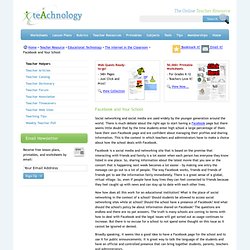

Download Dashlane now. Chromecast Deployment Guide, Release 7.6. What is Chromecast?

Chromecast is a digital media player developed by Google. The device, a HDMI dongle, plays audio/video content on a high-definition screen by directly streaming it via Wi-Fi from the Internet or a local network. Users select the media to play by using Chromecast enabled mobile/Web applications, or through a feature called “tab casting” that can mirror most Google Chrome browser content running on the device (MAC OSX and Windows). Chromecast uses a simple multicast protocol for Discovery And Launch that enables users to mirror their devices on a second screen.
The Chromecast devices operate on DIAL protocol. The clients that wishes to discover Chromecast servers send a request over UDP to IP address 239.255.255.250 and UDP port number 1900. Problem Statement The multicast address used by the Chromecast discovery packets has a TTL (Time To Live) set to 1. This document provides information on deploying Chromecast over large networks with single, as well as multiple VLANs.
Vision Mobile Classroom Management. The power of your desktop...from your iPad Your computer is a powerful tool, but it's hard to carry it around the classroom with you, which is a problem for anyone who wants to teach with technology without running back and forth or sitting chained to their desk.

Netop Vision Mobile channels the full functionality of your desktop computer into your iPad, freeing you to walk the classroom, stand by a student's side and be where you're needed - while still able to use all the functions on your computer. You get the power of your desktop...in your hand. The iPad classroom management solution that lets you teach with technology without being chained to your desk. Run a presentation from anywhere in the room. Advantages of Netop's iPad Classroom Management App. Cloud WLAN Security & Cloud WLAN Controller - WLANController.com. Networks Versus Groups in Higher education. The following is a rather long and scholarly type post arguing for the use of Networks in addition to groups commonly employed in formal campus and distance education.

The essay will probably find its way into a published paper or book chapter, but I thought I would post it here in case anyone has interest and especially comments. Thanks TerryBlending Groups and Networks in Higher Education A pervasive ‘buzz’ in education these days relates to development of ‘blended learning” (Garrison & Kanuka, 2004) . In most cases the ‘blending’ refers to developing educational programs that employ an appropriate mix of face-to-face and online activities.
However, this use of the term implies that it is the tool rather than the activity that defines learning outcomes. Figure 1 illustrates these three social aggregations with the individual learner in the centre. Figure 1. Challenges of Groups Group learning has been the norm for formal education for at least two centuries. Διδακτικά Βιβλία του Παιδαγωγικού Ινστιτούτου.
Hojoki. Creating a Page on foursquare : foursquare Support. BotNetChecker.com. LifeNet: About LifeNet. Introduction In the wake of major disasters, the failure of existing communications infrastructure and the subsequent lack of an effective communication solution results in increased risk, inefficiencies, damage and casualties.

Current options such as satellite communication are expensive and have limited functionality. A robust communication solution should be affordable, easy-to-deploy, require low-to-zero infrastructure, consume little power and facilitate Internet access. LifeNet is a WiFi-based data communication solution designed for post-disaster scenarios. It is open-source software and designed to run on consumer devices such as laptops, smart-phones and wireless routers. Problems in existing communication technologies The primary drawback of existing communication technologies such as cellular networks, WiFi networks, etc. is that reliability is not built into their design.
Figure 1 - Typical Cellular Network Figure 1 is the schematic of a typical cellular network. How Are Teachers & College Professors Using Facebook? Meebo.com. Favorites. Facebook and Your School. Web Quests Ready-to-go!

- 340+ Pages - Just Click and Print! View Collection 50,000+ Printable Worksheets - For Grades K-12 - Teachers Love It! View Now... Facebook and Your School Social networking and social media are used widely by the younger generation around the world. Facebook is a social media and networking site that is based on the premise that interacting with friends and family is a lot easier when each person has everyone they know listed in one place. Now how does all this work for an educational institution? Broadly speaking, it seems like a good idea to have a Facebook page for the school and to use it for public announcements. Experts also believe that it is inadvisable for students to be allowed Facebook access while at school.
The other issue that schools have to contend with in the context of Facebook is that students are sometimes posting things on this site which are problematic. Emmaüs Leeromgeving. Yugma, Free Web Conferencing, Online Meetings, Web Collaboration Service, Free Desktop Sharing, video conferencing, remote control software, net meeting, mac conferencing. Educational Networking: The Important Role Web 2.0 Will Play in Education. Best content in Discovery Educator Network. Free Skype calls and cheap calls to phones. Spyros Zindros (szindros) Free Video Chat and Video Conferencing from ooVoo. Spyzin's Network on Delicious.